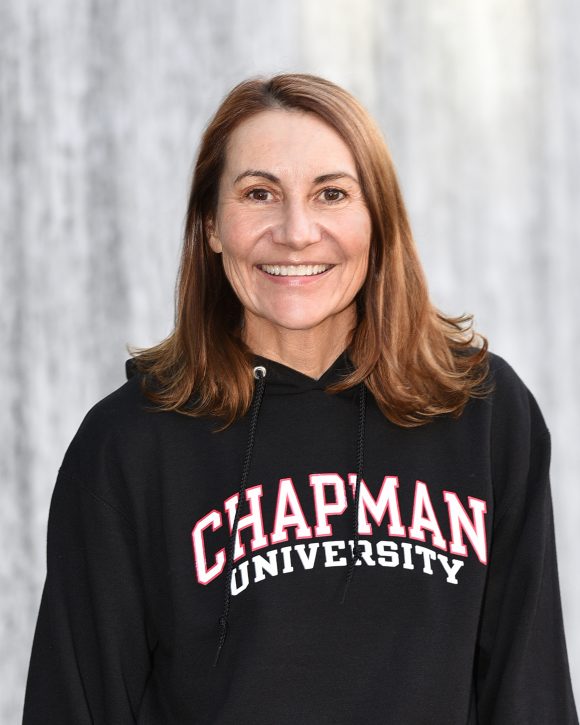
What Are Your Grammar Pet Peeves? by MFA Student Deborah Paquin
February 19, 2020

MFA Student Deborah Paquin
I was sitting at a Subway sandwich shop prior to class and saw their hand-written sign: “We do not except $50 bills.” I let the worker know that the sign had a typo and that it should say, accept. He gave me a blank stare, then asked me what type of sandwich I wanted.
The next time I went to that Subway, the sign was still incorrect, but the manager was there. I was certain he would want to know. “Sir, I just wanted to let you know that your sign should say a-c-c-e-p-t not e-x-c-e-p-t.” He looked right through me. Clearly my efforts to help improve the sign were not appreciated. I decided to let it go.
The next time I went to get my sandwich before class, all I could see was that sign. I had to move from my seat and sit on the other side of the table so that my back faced the sign. Since I ate there every week before class, it kept gnawing away at me, until—finally—I showed up with a Sharpie and asked the manager if I could fix the sign so that I could eat in peace.
Fast-forward to our Aspects of a Writer class that next week. Dr. Anna Leahy handed out a worksheet in which we had to list our Top Three Grammar Pet Peeves. We went around the room and each person was asked to name one pet peeve, but no repeats. Not only did the list get more interesting as we went around the room and the options narrowed, but the responses to the list became funnier too.
Elena Goodenberger, one of the MFA in Creative Writing graduate assistants and Dual Degree MA English/MFA Creative Writing student, said her pet peeve was misused words in text messages, such as using the word your instead of you’re. There were lots of nods and laughs. She continued, “If I do that in a text message, or see an auto-fill gone wrong, I immediately send a star/asterisk correction.” Based on the response of the class, Professor Leahy asked, “How many of you correct your texts?” Every hand went up.
One of my grammar pet peeves is it’s versus its. I felt embarrassed to say it because it seemed too simplistic. Yet, I heard a collective gasp, followed by a group, “YES!” I felt vindicated, and thought, “Oh My Gosh, THESE are my people!”
Paige Welsh, an MFA student, received her undergraduate degree in marine biology. She had the whole class in stitches as she tried to explain, very enthusiastically, when to use a semicolon, but her reasoning was just a tad off the mark. “You see, grammar has always been my problem,” said Welsh. “I get so excited about the vision of the project, that I don’t want to slow down for the detail, but that would be like showing up for a job interview in my pajamas.”
This led to a discussion about semicolons. There is one school of thought that says, if you need a semicolon, then just use two sentences. MFA student Tori O’Leary might disagree. Her pet peeve is “when people use a really long sentence, that goes on and on and on, and they don’t use any commas.” Professor Leahy interjected that maybe they don’t need a comma, but O’Leary was ready with an impassioned plea: “Nooooo! I love my commas.” I love my commas too—and my semicolons!
Does this mean I am no longer alone in a universe of agonizing texting typos and hooligan grammarphobes? I know it’s not normal to take a Sharpie to a Subway and fix a sign, even though I asked. I know most people don’t get up and change seats in order not to stare at a grammatical error whilst eating. But to know that there might be others like me! That is a true gift of the MFA program!
Professor Leahy finished up the semicolon discussion with examples from Dreyer’s English, penned by Benjamin Dreyer, the copy editor for Random House. Representing the Against Camp: “Do not use semicolons. They are transvestite hermaphrodites representing absolutely nothing. All they do show is you’ve been to college.”
But Dreyer counters with this quote by Lewis Thomas, author of The Medusa and the Snail: “The things I like best in T.S. Eliot’s poetry, especially in the Four Quartets, are the semicolons. You cannot hear them, but they are there, laying out the connections between the images and the ideas. Sometimes you get a glimpse of the semicolon coming, a few lines farther on, it is like climbing a steep path through woods and seeing a wooden bench just at the bend in the road ahead, a place where you can expect to sit for a moment, catching your breath.”
Ahhh, music to my ears. Now, it’s time for class—so gotta dash. But wait, is that an m-dash or an n-dash?

